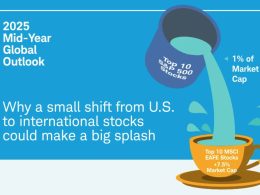by David Zahn, CFA, FRM, Head of European Fixed Income, Franklin Templeton Investments
Winston Churchill’s famous aphorism: “This is not the end. It is not even the beginning of the end. But it is, perhaps, the end of the beginning.” Seems very apt today.
Against the odds, the European Union (EU) appears to have accepted the UK government’s revised Brexit proposals.
There remains a big question mark over whether UK Prime Minister Boris Johnson can secure Parliamentary approval for his new agreement.
If he can edge a victory in the House of Commons, Johnson could be on course to deliver on his promise of taking the United Kingdom out of the EU on October 31.
But in Churchill’s words—appropriately delivered almost exactly 77 years ago—this is not the end. Consideration now shifts to how the two sides can negotiate a trade agreement over the next two years.
Financial Market Reaction
As active investors, we’ll be keeping a close eye on the financial market reaction. In the short term, we expect sterling should likely rally and gilt yields rise.
But markets are likely to remain very volatile. The ability to adjust portfolios quickly to react to changes in the market is likely to be important for active investors.
For example, if there were to be a 50 basis-point1 rise in yields on the 10-year gilt, some investors might consider that an attractive buying opportunity.
Some of these potential moves in gilt yields might be very short term. However, we should remember that global growth is slowing; growth in the United Kingdom has slowed and growth in Europe has also slowed down considerably. This development is unlikely to change that.
So, if there were to be a significant rise in gilt yields, some investors might spy a chance to lengthen duration2 in their portfolios.
Currency considerations are likely something investors are paying attention to. We think the pound is already undervalued. Once you remove the uncertainty of a possible hard Brexit, we’d expect to see a resumption of inward investment into the United Kingdom, which could have a positive influence on sterling. But prudent investors will likely want to see what any trade agreement looks like before making decisions.
Impact on Corporate Bonds
Another area this development is likely to bring focus on is corporate bonds—not just those denominated in sterling, but also in euros.
UK corporate bonds have underperformed in recent quarters. We’d now expect to see a potential snapback quite quickly, with yields likely heading down towards the levels of European counterparts.
Away from the United Kingdom, we reckon this tentative agreement should have a positive impact on German assets. Germany was set to be one of the biggest losers if the United Kingdom were to leave without a deal—particularly the German auto sector.
This won’t necessarily turn around the fortunes of a struggling Germany, but it might take some of the pressure off. There’s still likely to be a lot of uncertainty over the coming months as the practical arrangements of this deal in principle play out.
The Relationship between the United Kingdom and EU
We think a lot of investors have been waiting for some sign of a resolution to Brexit before they return to investing in the United Kingdom. Taking the major risk of a no-deal Brexit out of the European economy should act to bolster confidence somewhat.
But while this agreement reduces the chances of one unknown—the possibility of a Hard Brexit—there remain many other unknowns to be dealt with. As a result, we expect volatility to continue, at least in the short term.
To get insights from Franklin Templeton delivered to your inbox, subscribe to the Beyond Bulls & Bears blog.
For timely investing tidbits, follow us on Twitter @FTI_Global and on LinkedIn.
*****
Important Legal Information
The comments, opinions and analyses expressed herein are for informational purposes only and should not be considered individual investment advice or recommendations to invest in any security or to adopt any investment strategy. Because market and economic conditions are subject to rapid change, comments, opinions and analyses are rendered as of the date of the posting and may change without notice. The material is not intended as a complete analysis of every material fact regarding any country, region, market, industry, investment or strategy.
Past performance is not an indicator or guarantee of future results.
Data from third-party sources may have been used in the preparation of this material and Franklin Templeton Investments (“FTI”) has not independently verified, validated or audited such data. FTI accepts no liability whatsoever for any loss arising from use of this information and reliance upon the comments, opinions and analyses in the material is at the sole discretion of the user. Products, services and information may not be available in all jurisdictions and are offered by FTI affiliates and/or their distributors as local laws and regulations permit. Please consult your own professional adviser for further information on availability of products and services in your jurisdiction.
CFA® and Chartered Financial Analyst® are trademarks owned by CFA Institute.
This information is intended for US residents only.
What Are the Risks?
All investments involve risks, including possible loss of principal. Bond prices generally move in the opposite direction of interest rates. Thus, as prices of bonds in an investment portfolio adjust to a rise in interest rates, the value of the portfolio may decline. Changes in the financial strength of a bond issuer or in a bond’s credit rating may affect its value. High yields reflect the higher credit risks associated with certain lower-rated securities held in a portfolio. Investments in foreign securities involve special risks including currency fluctuations, economic instability and political developments.
Actively managed strategies could experience losses if the investment manager’s judgement about markets, interest rates or the attractiveness, relative values, liquidity or potential appreciation of particular investments made for a portfolio, proves to be incorrect. There can be no guarantee that an investment manager’s investment techniques or decisions will produce the desired results.
1. A basis point is a unit of measurement. One basis point is equal to 0.0%.
2. Duration is a measure of the sensitivity of a bond or a fund to changes in interest rates. It is typically expressed in years.
The post Brexit: Not the Beginning of the End, But the End of the Beginning? appeared first on Beyond Bulls & Bears.
This post was first published at the official blog of Franklin Templeton Investments.















